Why is it important to learn how to identify butterflies? Learning some of the most common butterflies in your area will help you to understand what kinds of butterflies you are attracting to your yard. If your goal is to help endangered species, this is a great place to start! In the United States and Canada, there are more than 750 species of butterflies! Much of their habitats are being lost on a daily basis due to human activity (agriculture, roads, insecticides, herbicides etc.) However, you can help them by building habitat in your own backyard! Click here to learn more about endangered species of butterflies. 10 Butterflies That You May Have Seen Before
Monarch- Danaus plexippusHow to Identify: The monarch butterfly is one of the most iconic species of butterflies although it is sometimes confused with it’s lookalike butterfly, the Viceroy. The upper side of the male is bright orange with wide black borders and black veins. The upper side of the female is more of an orange-brown with wider black borders than the male. The Viceroy butterfly mimics the Monarch in order to deceive predators. The main physical difference between the monarch and the viceroy is the black line drawn across the viceroy's hind wings, which monarch butterflies do not have. Viceroy butterflies are also significantly smaller than Monarchs. Click here to read a blog about the relationship between viceroy and monarch butterflies. Where are they found? The monarch is found in a variety of habitats including fields, meadows, weedy areas, marshes, and roadsides. They also complete an annual southward migration from the northern and central United States and southern Canada to Florida and Mexico What plants do they like? Host and Nectar plant: Monarchs cannot survive without milkweed. Monarch caterpillars only eat milkweed plants (Asclepias spp.), and they also only lay their eggs on Milkweed. Due to the loss of habitat and the disappearance of milkweed, Monarchs populations are decreasing drastically. Not sure where to find milkweed? The Xerxes Society has created a handy database where you can search your state and it will list where you can find native milkweed nearest you. You can also buy milkweed seed here and grow it yourself at home! Regal FritillaryHow to Identify: The regal fritillary is a large butterfly that is smaller in size to the monarch butterfly. The upper side of the forewing is bright red-orange with black markings. The upper side of the hindwing is black with a row of white spots and on the wing edge is a row of spots that are orange in males and white in females. Where are they found? The regal fritillary is found on the Great Plains and is associated with tallgrass prairies, meadows and pastures. What plants do they like? The larvae feed on violets. The adults feed on a variety of flowers such as milkweeds, thistles, clover and purple coneflower. There is an urgent call to track Regal Fritillary butterflies. The Wildlife Conservation Fund created a citizen science project to monitor regal fritillaries, as well as monarchs, which are similar in appearance. Eastern Tiger Swallowtails- Papilio glaucus How to identify: They are quite large with bright yellow and black stripes. Male tiger swallowtails have some orange and blue spots near their tail. Females have both a light and dark form. The light form looks a bit like the male but with more blue on their hind wings. The dark form still has the blue spots, but doesn’t have any yellow. Where are they found? The eastern tiger swallowtail can be found in a variety of habitats, especially near water, but also in meadows, gardens, parks and roadsides. It is native to the Eastern United States. What plants do they like? Host plant: They only lay eggs on plants from the Magnolia and Rose plant families. Nectar plant: They drink nectar from flowers such as milkweed, thistles, honeysuckle, ironweed and red clover. Black Swallowtail- Papilio polyxenes How to identify: The upper surface of the wings is black with two rows of orange-yellow spots. There is a row of blue spots between the rows of orange/yellow spots on the hind wings. There is a conspicuous red spot on the inner edge of the hind wings. Where are they found? Throughout much of North America in meadows, urban gardens, and roadsides. What plants do they like? Nectar plants: They especially like to feed on Milkweed, Phlox, Red clover and Thistle. Host plants: They will lay their eggs on plants of the Carrot family such as carrots, parsley, dill, fennel, Queen Anne’s Lace and rue. Cabbage White- Pieris rapae How to identify: The cabbage white butterfly is white with charcoal gray tips on the wings. Males have a single black spot on the center of each forewing while females have two spots in the same place. The color under the forewings may be yellow or light green. Where are they found? They are well adapted to urban areas but can also be found in fields, meadows, parks and gardens from early spring to late fall. It has been introducted to the US from Europe and is found North Africa, Asia, South America and Great Britain as well. What plants do they like? The caterpillar can be found feeding on the leaves of cabbage and other cruciferous vegetables such as broccoli and cauliflower. Orange Sulphur or Alfalfa Butterfly -Colias eurytheme How to identify: The orange sulfur is identified by a small dark mark on the upper forewing, which is rounded into an oblong dot.Both sexes have a dark border; there are pale spots within the border on females. Where are they found? They occur in fields, along roads and in residential gardens. They are found throughout North America except for central and southeastern United States. They are also seen in Mexico and Canada. What plants do they like? Host plants: Larvae feed on legumes, especially alfalfa, white clover and white sweet clover. Nectar plants: Adults are attracted to many flower species. Spring Azure- Celastrina ladonHow to identify: They are very small (under 1”) in different shades of a light violet blue. Form "violacea" has scattered dark spots. Form "marginata" has a dark gray-brown border on HW. Form "lucia" has a prominent dark splotch in the middle of the HW as well as dark borders on both wings. Where are they found? They inhabit woodland edges and openings, and readily visit garden flowers throughout the United States except for coastal regions of Texas and Florida. What plants do they like? Host plants: They primarily like buds of Flowering Dogwood, blueberries, and viburnums. Nectar plants: They like a large variety of nectar-rich flowers. Mourning Cloak- Nymphalis antiopaHow to identify: The mourning cloak is a large and easy to identify because it doesn’t have any look-a-likes. They are dark brown/maroon with thickly banded cream-colored edges. They also have bright blue spots along the edges and black-brown spotted underwings. Where are they found? Mourning cloaks can be found in open woods, parks, gardens, and along the edges of streams, lakes and ponds throughout North America. What plants do they like? Nectar plants: Adults drink nectar from plants, such as milkweed and red maple, rotting fruit and tree sap. Host plants: The caterpillars will feed on willow species, American elms, hackberry trees, hawthorne, wild rose, birch and poplar trees. Painted Lady- Vanessa cardui How to identify: The Painted Lady butterfly in orange and brown in color with mottled brown spot and 4 large eyespots. Where is it found? They are the most common butterfly in the world and found throughout the world except in Antarctica, Australia and South America. What plants do they like? Host plants: thistle, mallows, hollyhock, legumes, others. Nectar plants: They can feed on over 300 species of plants although their favorites are from the Aster family. Red Admiral- Vanessa atalantaHow to identify: The Red Admiral Butterfly is a medium-sized butterfly with black wings, orange bands, and white spots. Where is it found? The red admiral is widely distributed across temperate regions of North Africa, the Americas, Europe, Asia, and the Caribbean. It resides in warmer areas, but migrates north in spring and sometimes again in autumn. Typically found in moist woodlands What plants do they like? Host plants: Nettle (Urtica dioica and Urtica urens), sometimes False Nettle (Boehmeria cylindrica) Still need help with the identification? Submit your picture here and you will receive an email with the identification!
294 Comments
Hello, thank you for your work. I live in Northern California by Santa Rosa. At my house and in the garden at work I have seen a monarch butterfly with the swallowtail. I can’t find anything on the internet about it. I have seen them for weeks at a time. The markings and size are that of the monarch but definite little tail. Do you know about this? Thank you, judy
Reply
Rebecca
4/4/2020 10:53:05 am
Hi Judy,
Reply
Taryn Nicholls
5/29/2019 05:07:44 pm
I live in bc canada, and found a butterfly or moth recently. It is blacky-grey with orange surronded black dots. It has this patern on both wings, upside and downside.
Reply
Rebecca Chandler
4/4/2020 10:54:18 am
Hi Taryn,
Reply
Debbie
8/3/2019 12:06:30 am
Hello. I am in northern Vermont, and hadn't seen any monarchs for several years. In 2018, quite a few native milkweed plants seeded themselves in the flower garden in front of my house. I let them stay, and did see a monarch there only once during last summer. This year, the milkweed has taken over most of my flower garden and is smothering everything else I have planted there. In addition to many bees and other butterflies, I have seen monarchs there on several occasions. Yesterday, two of them spent considerable time flying around and feeding on the milkweed blossoms. My dilemma is that I want to save the other flowers I have planted there, while also providing a good habitat for the monarchs. I plan to collect whatever seeds I can in the fall and try to plant them in a different location nearby. I am looking for guidance on how and when I can best move at least some of the milkweed from my flower garden without causing harm to the butterflies. Thank you.
Reply
Rebecca Chandler
4/4/2020 11:01:04 am
Hi Debbie,
Reply
Debbie
4/4/2020 11:52:17 am
Hi Rebecca,
Josh
8/28/2019 02:53:52 pm
I have a butterfly that’s black with white spots inside,what is it?
Reply
Debbie
8/28/2019 09:09:06 pm
One thing for sure, it's not a monarch. I am new at posting to this site, and certainly no expert, so I don't know if I can give much help. There are likely a number of different butterflies that fit your description. If you see this butterfly again and are able to take a photo of it, you can send it to https://www.butterfliesandmoths.org/identify via the link on this page. Or check other sites with photos, such as https://www.insectidentification.org. You can narrow your search by state, if you are in the U.S., or various characteristics of the insect. Good luck!
Reply
Rebecca Chandler
4/4/2020 11:01:31 am
Hi Josh,
Reply
Bob Kottman
4/3/2020 09:57:46 am
In the section displaying numerous types of "critters" found in Roseheart, there is a photo of a butterfly which is erroneously labeled a "Monarch". I am not certain what type it is, but it is definitely NOT a Monarch. Monarchs are beautiful orange with black wing edges and "veins" in the wings.
Reply
Rebecca Chandler
4/4/2020 11:05:55 am
Hi Bob,
Reply
Judith delaney
4/14/2020 11:11:44 pm
A white butterfly with multiple black spots on my Scotch moss today. Cant find a matching picture
Reply
Rebecca Chandler
4/15/2020 05:29:22 am
Hi Judith,
Reply
8/8/2020 02:57:56 pm
Hi Rebecca,
Reply
10/23/2021 08:14:22 pm
Butterflies of Idaho website might be of help to you, Kathy Ball. I'm in Boise and this is my go to first site. I'm sure there are others. As others have suggested, if you are able to take a still photo of them others on this site have volunteered to help and I would be interested in seeing what you have -- though I'm no expert.
BETH JANKOWSKI
8/24/2020 05:23:55 pm
I watched a monarch butterfly lay eggs on the honeysickle vine that volunteered near the milkweed plants. Granted I only had 3 plants in this area of my yard. I did go back many hours later to make sure and there were the eggs all over the honeysickle. Now they are in my nursery. I plan to watch them and as soon as they show they are hatching I will put Milkweed plant leaves in with them. Question, how unusual is this occurance?
Reply
Frances Whaley
10/2/2020 09:23:23 am
I'm in Cape Coral, Florida residence and found I have a Giant Milkweed ( crown plant) that is gigantic for sure at least 10ft × 12ft wide and 12 - 15ft h!! Needless to say , there are lots of butterflies and caterpillars , etc. !!! I'm trying to propagate the crown plant with cuttings. Any help would be appreciated. As we are renting the property and would like to have th plant when I move and also to share with other butterfly enthusiasts!!
Reply
12/28/2020 12:21:51 am
the post am gonna sharing with you will be the most desireable post of everyone. the content of the post is so much useful.
Reply
carol moore
4/22/2024 12:51:18 pm
The subject is butterflies. How does your statement relate to butterflies? You are an interloper of the most annoying kind! Either address the subject of butterflies, in a meaningful, intelligent manner or, if that is beyond your ability, get lost!
Reply
1/13/2021 11:38:23 pm
Hi there! I read a lot of posts but the topic covered in this is so Amazing & helpful. It’s such a beneficial for visitors. I would like to thank you so much for sharing this post..
Reply
3/3/2021 09:06:11 pm
I’m here to appreciate you work This blog is very helpful for me. It’s such a beneficial for visitors. All of our products have designed to be used for Novelty, Education and Entertainment purposes only.
Reply
Thank you for sharing this valuable information with us. All of our products have designed to be used for Novelty, Education and Entertainment purposes only. It’s such a beneficial for visitors. You can get some professional help to modify PDF Bank Statements.
Reply
5/23/2021 08:26:06 am
I went and checked my flower garden in Southern New Hampshire. There were 5 or 6 black and light yellow butterflies, markings: head looks like it has 2 fangs, blue around neck , 7 white squares, 4 that have shape of tiny teeth on both sides. looks like little teeth on same side.
Reply
Rocket Brady
6/9/2021 07:48:25 am
A large butterfly just slammed into our sliding glass door. it was so loud that I thought it was a chickadee or a hummingbird. I was sitting at the table, hopped up and saw that it was almost completely black with orange along its wings. Very similar to the Mourning Cloak- Nymphalis antiopa you pictured, but these were bright orange like an oriole. It flopped a bit and then walked between the step and the house and disappeared under the deck. i tried frantically to find it, but it must have flown off. LARGE, black, and orange. Any guesses? Thanks for your hard work!
Reply
Rocket Brady
6/9/2021 07:50:01 am
Sorry. We're in Southern New Hampshire, along the water. Thanks.
Reply
Kathleen
8/20/2021 03:33:02 pm
I found a huge flying "thing." At first I thought it was a butterfly. Could it be a Polyphemus moth?
Reply
9/7/2021 07:11:42 am
I am so delighted I found your weblog, I really found you by accident,
Reply
Ethan Henry
10/20/2021 03:53:13 am
I needed a <a href="https://ldninjas.com/learndash-services">learndash consultation</a> to add some extra features on my site.
Reply
10/20/2021 03:55:56 am
I really appreciate the way you people learndash consultation my plugin. Thanks!
Reply
10/20/2021 03:57:34 am
That's a great content, exactly what I was looking for. Thank you and continue doing a good job!
Reply
kaitlyn law
3/3/2022 10:49:05 am
i need help find a butterfly i cant find it.
Reply
4/16/2022 03:50:02 am
Amazing blog it is very helpful and informative content good work. Keep it up.
Reply
Jenny
5/8/2022 06:16:44 pm
Thank you for your wonderful website! I was able to identify the butterfly in my garden today from your photos, and learn from your text why she was there! It was a black swallowtail and she kept very purposefully landing on my parsley plant, so now I surmise she was laying her eggs. On Mother’s Day, of all days. It feels very charlottes web. I will have to sacrifice the parsley plant to her little caterpillars because I feel like she trusted me with them. (Normally I’d squash a worm on one of my herbs.) in fact, I feel,inspired after scrolling through your page to buy more parsley and seek out more butterfly friendly plants because butterflies are so beautiful, and truly need a little human help in this world of pesticides and dwindling natural,habitats to thrive.
Reply
Jenny
5/22/2022 07:51:58 am
A follow up two weeks later — we have a few beautiful swallowtail caterpillars on the parsley plant. I’m happy letting them devour it and have moved the plant to a screened area to help protect the growing little caterpillars from lizards and birds.
Reply
Anne Beal
6/3/2022 06:49:12 am
how far west do the yellow swallowtails go? I have one in my yard in eastern South Dakota. Haven't seen a single Monarch yet and I have never seen a Yellow Swallowtail here before, didn't know what it was until today.
Reply
Katie McCollum
7/16/2022 01:02:09 pm
We have a lot of Eastern Yellow Swallowtails in our yard in Coeur d’Alene, Idaho.
Reply
Orange Sulphur or Alfalfa Butterfly -Colias Orange Sulphur or Alfalfa Butterfly
Reply
10/14/2022 05:13:18 am
This post is very informative.I like this post.
Reply
10/19/2022 10:37:55 am
Popular occur water red able out individual.
Reply
10/29/2022 10:40:47 pm
Scene we similar court become ten be century. Hundred article two but.
Reply
12/17/2022 05:06:57 am
This is such a nice post, I really like it keep sharing this type of posts with us. <a href="https://asalvision.com/product/beth-dutton-yellowstone-season-5-pink-printed-coat/">Beth Dutton Pink Coat</a>
Reply
12/17/2022 05:52:47 am
Make your style stunning by wearing the character of Tv series Yellowstone <a href="https://evesuiting.com/product/john-dutton-yellowstone-season-4-quilted-jacket/">John Dutton Quilted Jacket</a>, this jacket make from high quality cotton fabric, shop now and get upto 50% Off
Reply
12/19/2022 05:28:36 am
I love your blog, it is wonderful! I wish that I could go to the grocery store and actually buy some of the things you talk about and make them into meals. Thank you for taking the time to write a great blog <a href="https://www.marveljacket.com/product/yellowstone-s05-beth-dutton-pink-coat/">Beth Dutton Coat</a>
Reply
12/25/2022 11:05:26 am
Yellow butterfly means luck.
Reply
12/27/2022 06:51:37 am
This is such a nice post, I really like it keep sharing this type of posts with us. <a href="https://asalvision.com/product/beth-dutton-yellowstone-season-5-pink-printed-coat/">Beth Dutton Coat Season 5</a>
Reply
12/28/2022 11:44:09 pm
The <a href="https://masterpointleather.com/product-category/leather-trench-coat/men-coat/">brown leather trench coat</a> is winter product.
Reply
1/15/2023 10:52:26 pm
love the content of this blog and the positive you have. Thanks!
Reply
2/16/2023 12:15:20 am
I like this blog. Thank you for sharing this information.
Reply
6/11/2023 07:02:01 pm
The double-stitched edges of our bathroom rugs ensure that they retain their shape and durability, even after repeated washings.
Reply
6/21/2023 01:06:11 am
You have given me a lot of knowledge about this butterfly because I did not know all these things before and you dont know about this Yellowstone Jimmy Hurdstrom Jacket. Because this latest design has come in fashion so you wear it.
Reply
7/12/2023 05:45:59 am
Great writing. Was interesting to read
Reply
7/12/2023 05:46:54 am
Check out our selection of <a href="https://www.gothicattitude.com/men-clothing"><strong>Men Gothic
Reply
7/17/2023 08:04:13 am
Interesting read! Thinking of getting the Yellowstone Beth Dutton coat. One of my favourite characters of the show!
Reply
7/18/2023 04:24:05 am
I like this blog. Thank you for sharing this information
Reply
Kat
7/23/2023 04:29:15 pm
I am in Vermont, and I have Regal Fritillaries and Red Admirals visiting my Echinacea. I am very happy about this. I have seen Monarchs flitting around but not many. The bees are fewer as well. It continues to amaze me that Roundup and other such products are still used in the US, in spite of all of the evidence of the damage they do. Sadly, it is a sign that money is more important than saving the environment is! Some days I am ashamed to be American!
Reply
7/25/2023 11:46:43 am
Butterflies are the most beautiful creatures on the world. I love them.
Reply
7/31/2023 02:29:23 am
thanks for posting this amazing article hope you'll write more
Reply
7/31/2023 04:02:36 am
thanks for posting this wonderful article i wish you best of luck for the future
Reply
Kylie Harvey
8/7/2023 12:38:25 am
GET RICH WITH BLANK ATM CARD, Whatsapp: +18033921735
Reply
8/10/2023 01:11:41 pm
This was very helpful to identify what our random caterpillar turned into! It was a Red admiral! In Wisconsin!
Reply
nice article I am very interested in your article. very good
Reply
11/9/2023 03:05:44 am
Shop this best quality <a href="https://blackfurcoat.com/product/best-christmas-ever-jason-biggs-green-vest/"> Best Christmas Ever Jason Biggs Green Vest </a> For Men SHOP NOW....
Reply
11/13/2023 01:45:41 am
Thanks a lot for sharing a piece of wonderful information. keep it up posting.
Reply
11/14/2023 04:28:02 pm
very helpful to identify what our random caterpillar turned into! It was a Red admiral! In Wisconsin!Thank you!
Reply
11/15/2023 09:49:51 pm
This is a useful and informative post . Tank you for sharing this butterfly identification blog
Reply
11/18/2023 10:58:52 pm
I found your blog the usage of msn. That is a very neatly written article. I’ll be sure to bookmark it and return to learn more of your helpful info. Thanks for the post. I will certainly return
Reply
11/20/2023 06:09:28 am
helpful information, and rest assured that I will continue to support you guys I’ll be sure to bookmark it and return to learn more of your helpful info. Thanks for the post. I will certainly return
Reply
11/20/2023 07:18:33 am
ead your blog occasionally and i own a similar one and i was just curious if you get a lot of spam feedback? If so how do you protect against it, any plugin or anything you can suggest? I get so much lately it’s driving me mad so any support is very much appreciated.
Reply
11/23/2023 01:15:33 am
. I cant wait to see your post soon. Good Luck with the upcoming update. This article is really very interesting and effective.
Reply
11/27/2023 03:09:02 am
I recently purchased the Arcana Archive Jacket, and I must say, it has exceeded all my expectations. The ordering process was smooth, and the jacket arrived promptly. The packaging was secure, ensuring that the product reached me in pristine condition.
Reply
12/4/2023 08:12:43 am
I believe that yesterday’s interviews will speak volume. I intend to share this article with friends. Be blessed
Reply
12/4/2023 11:35:55 am
Good morning, your website appears impressive. If you are interested in cricket, please visit my website to play games on betting websites and earn money.
Reply
Thoroughly impressed with this article! The author's expertise and attention to detail are evident throughout. The content is not only informative but also presented in a way that captivates the reader. A job well done, and I'm looking forward to exploring more from this author!
Reply
12/10/2023 11:51:58 pm
Great writing. Was interesting to read
Reply
12/10/2023 11:48:07 pm
Great writing. Was interesting to read
Reply
12/12/2023 09:48:00 pm
The diversity of butterflies in the United States and Canada is astounding! Knowing how to identify them is not only fascinating but also essential for preserving these beautiful creatures. By creating a butterfly-friendly habitat in our yards, we can provide a safe haven for these insects in the face of habitat destruction.
Reply
12/15/2023 07:12:45 am
Complete your Christmas look with our range of stylish <a href="https://famousjacket.com/?s=Christmas&post_type=product"> The Best Christmas Sales 2023 </a> available online at Hot Topic! With Free Shipping.
Reply
12/23/2023 03:32:35 am
You have made some good points here. I looked on the internet for the issue as well as found most people will certainly accompany with your website.
Reply
12/25/2023 08:51:10 pm
The best faux leather jackets are the ones that actually make you happy. And our effort is to provide you with the best jackets. So visit our site now.
Reply
12/28/2023 06:38:34 am
Wowwwwwww! i just love this article thanks for sharing this article..
Reply
1/1/2024 12:44:14 am
ve into the world of 'Monster High' with our exclusive look at Clawdeen Wolf's iconic fashion from the Monster High movie! Perfect for fans of trend-setting celebrity styles, this article is a must-read for anyone who loves to stand out with bold, unique jackets inspired by their favorite characters. Explore how Clawdeen Wolf's fierce and fabulous style, characterized by her distinctive wolf-themed jackets, sets a new standard in fashion. Whether you're a fan of the Monster High series or just love incorporating celebrity-inspired outfits into your wardrobe, you'll find plenty of inspiration here. Discover how to channel Clawdeen's confidence and attitude in your everyday style, with tips on selecting jackets that blend her signature look with modern trends. Get ready to howl in style with Clawdeen Wolf's fashion
Reply
1/3/2024 11:11:59 pm
brother suggested I would possibly like this blog. He was once entirely right. This submit actually made my day. You can’t believe just how so much time I had spent for this information! Thank you!
Reply
1/4/2024 08:05:54 am
Revenge Official Clothing Store + XXX Tentacion Clothing Store,You can buy Official Hoodies, T-Shirts,Jackets,Long Sleeves and More.
Reply
1/5/2024 11:42:22 pm
information on this posting?I have read a few of the articles on your website now, and I really like your style. Thanks a million and please keep up the effective work
Reply
1/9/2024 02:19:50 am
Thanks for sharing this information with us! Amazing articles
Reply
1/15/2024 08:25:51 pm
details regarding this posting?After reading a few of your articles, I'm pretty impressed with your writing style. Many thanks, and please continue your productive job.
Reply
1/18/2024 08:11:43 am
It is possible to perform the second step (checking to find out what the purchase was made with your card) With this option you might be able utilize the information (date date, time, and place of purchase). <a href="https://greatdomains.shop/products/LADANGTOTO">ladangtoto</a>
Reply
1/21/2024 08:49:47 am
<p>Nice blog !<a href="https://ccvshop.tw/login" rel="nofollow ugc">dumps shop</a></p> providing cc fresh high quality guaranteed legal rate up to 90% | stock update everyday !!
Reply
<a href="https://newhealthinsight.com/" rel="dofollow">Papa4d</a> I have been surfing online more than 2 hours today, yet I never found any interesting article like yours. It’s pretty worth enough for me. Personally, if all site owners and bloggers made good content as you did, the internet will be much more useful than ever before.https://newhealthinsight.com
Reply
1/26/2024 10:05:27 am
New Year Hot Sale Rfx Leather Premiume Shearling Aviator Vintage Fashion Jackets Up To 50%Off Rfx Leather Jackets
Reply
1/29/2024 08:16:15 am
This site is my inspiration , real superb design and style and perfect content.
Reply
1/29/2024 08:17:18 am
This is a very well written article. I’ll be sure to bookmark it and return to read more of your useful information. Thanks for the post. I will certainly return.
Reply
1/29/2024 08:18:01 am
Thank you, I’ve been looking for information on this subject recently.
Reply
2/6/2024 04:18:57 am
Faridabad's taxi service offers convenient transportation with reliable drivers, timely pickups, and competitive fares. Whether for daily commutes or special occasions, it ensures efficient travel across the city.
Reply
2/6/2024 04:20:07 am
Faridabad cabs provide hassle-free rides with courteous drivers, clean vehicles, and easy booking options. Offering prompt service and competitive rates, they're the go-to choice for comfortable and convenient transportation in Faridabad.
Reply
2/6/2024 04:21:07 am
Dehradun's taxi service offers reliable transportation solutions with professional drivers, comfortable vehicles, and flexible booking options. Whether for local travel or outstation trips, it ensures safe and convenient journeys across the city and beyond.
Reply
2/8/2024 01:43:33 am
Reply
2/8/2024 11:57:00 pm
It’s fantastic. This is one of the top websites with a lot of useful information. This is an excellent piece, and I appreciate this website; keep up the fantastic work.
Reply
2/11/2024 10:47:16 pm
Fabulous post. Do you want to invest in the <a href="https://evbatstck.bloggersdelight.dk/2023/12/16/navigating-the-best-strategies-for-investing-in-ev-battery-stocks/">best EV battery stocks</a>? Well, amid the sweeping shift to electric vehicles, investments in EV stocks or sourcing from battery suppliers could benefit. However, you can evaluate the growth potential with a CAGR calculator before buying EV stocks. Find out more in this dedicated EV stock article.
Reply
2/11/2024 10:48:04 pm
Fabulous post. Do you want to invest in the best EV battery stocks? Well, amid the sweeping shift to electric vehicles, investments in EV stocks or sourcing from battery suppliers could benefit. However, you can evaluate the growth potential with a CAGR calculator before buying EV stocks. Find out more in this dedicated EV stock article.
Reply
I recently purchased the <a href="https://zellberry.com/shop/men-jackets-outfits/two-button-leather-blazer/">Casual Black Blazer For Men</a> from Zellberry Outfits, and I must say, I am extremely impressed with both the product and the overall shopping experience.
Reply
2/16/2024 10:55:43 pm
Nice blog!!! Recently i visit your post, it is very useful for me. Keep doing... <a href="https://www.gothicattitude.com/men-jacket">Men Gothic Jacket</a>
Reply
2/18/2024 08:32:47 pm
This is truly a great read for me. I have bookmarked it and I am looking forward to reading new articles. Keep up the good work!
Reply
2/19/2024 06:40:54 am
Wowwwwwww! i just love this article thanks for sharing this article..<a href="https://www.leatherglaze.com/product/addison-leather-denim-jacket/">Free Leather Jackets</a>
Reply
2/20/2024 12:56:16 am
Thanks for the information. <a href="https://shopkanyewestmerch.com/">shopkanyewestmerch</a> I really like the way you express complex topics in lucid way. It really helps me understand it much better way.
Reply
2/20/2024 01:25:23 am
I just love this article thanks for sharing this article. Thanks for sharing.
Reply
2/20/2024 02:00:17 am
Great website you have got here. Keep up the good work and thanks for sharing your blog site it really helps a lot.
Reply
2/22/2024 01:14:32 am
I went to this website, and I believe that you have a plenty of excellent information, I have saved your site to my bookmarks.
Reply
2/22/2024 01:43:31 am
Shop Mea Culpa Collection At Our Offiial Website We Have Wide Range Of Authentic Mea Culpa Beanie & Mea Culpa Hat With Free Fast Shipping.
Reply
2/22/2024 01:44:59 am
Shop Yeezy Slides with fast shipping on all stock & huge discount on all sizes and colors so dont forget to buy Yeezy Slides right now.
Reply
2/22/2024 04:50:28 am
<a href = “https://www.vanityfair.com/style/fashion”> Fashion Style </a> at Vanity Fair embodies a harmonious blend of sophistication and trendsetting elegance. Explore a curated collection of timeless and avant-garde fashion, where every detail is meticulously crafted to redefine luxury. Immerse yourself in the world of Vanity Fair's Fashion Style, where classic aesthetics meet contemporary allure, setting the standard for sartorial excellence.
Reply
2/24/2024 06:55:14 pm
Also your site loads up fast! What web host are you using?
Reply
2/24/2024 07:02:33 pm
It is not my first time to go to see this web site, i am visiting this website dailly and take good information from here daily.
Reply
3/1/2024 01:49:46 am
In a world full of challenges and uncertainties, it's easy to lose sight of the good things in life. However, practicing gratitude can significantly improve our well-being, happiness, and success.
Reply
3/4/2024 09:31:11 am
You really are talented at creating original articles. I admire your thought process and the manner you wrote this essay to share your opinions. Your writing style truly impresses me. I appreciate you making my experience even more lovely.
Reply
3/4/2024 09:32:06 am
Writing original content is a true skill of yours. In this post, you articulate your opinions in a way that I find appealing. Your writing technique really impresses me. I'm grateful that you enhanced the beauty of my encounter.
Reply
3/4/2024 09:33:17 am
You really have a gift for creating original articles. I appreciate your thought process and the manner you presented your points of view in this essay. Your writing style really impresses me. I appreciate how you enhanced the beauty of my experience.
Reply
3/4/2024 09:34:00 am
You truly have a gift for creating original content. I appreciate the way you articulate your ideas in this piece and the way you think. Your writing style really strikes me. I appreciate you adding to the beauty of my experience.
Reply
3/4/2024 09:34:45 am
You really are talented at creating original articles. I admire your thought process and the manner you wrote this essay to share your opinions. Your writing style truly impresses me. I appreciate you making my experience even more lovely.
Reply
3/4/2024 09:35:42 am
Writing original content is a true skill of yours. In this post, you articulate your opinions in a way that I find appealing. Your writing technique really impresses me. I'm grateful that you enhanced the beauty of my encounter.
Reply
3/4/2024 09:36:20 am
You really have a gift for creating original articles. I appreciate your thought process and the manner you presented your points of view in this essay. Your writing style really impresses me. I appreciate how you enhanced the beauty of my experience.
Reply
3/4/2024 09:38:15 am
You truly have a gift for creating original content. I appreciate the way you articulate your ideas in this piece and the way you think. Your writing style really strikes me. I appreciate you adding to the beauty of my experience.
Reply
Welcome to the exciting world of <a href="https://rdphostings.com/blog/1v1-lol-unblocked/">1v1 LOL</a> Unblocked game, where you can experience a thrilling 3D shooter game right in your browser. Discover 1v1, the online building simulator & third person shooting game. Battle royale, build fight, box fight, zone wars and more game modes to enjoy!
Reply
3/11/2024 11:06:43 pm
This is very helpful content for the user <a href="https://essentialshoodiemerch.com/">Essentials Hoodies</a>
Reply
3/17/2024 01:26:16 pm
In this way, the time has come to express farewell to your old and exhausting garments and wear funny trending t-shirts. What's more, welcome your stylish solace wear with mitigating and inspiring tints to light up your day. Presently, who expresses remaining at home is loaded with dreariness. With these chic yet comfortable funny trending t-shirts clothing types, you can shake every day at home.
Reply
3/18/2024 06:21:19 am
I love reading this blog.
Reply
3/18/2024 06:22:27 am
Thank you for sharing this article.
Reply
3/19/2024 01:05:38 pm
Its a really interesting and informative article for me. I appreciate your work and skills. Thanks for sharing!
Reply
3/23/2024 05:44:36 am
Don't let a malfunctioning fireplace spoil your winter evenings! Opt for Fireplace Repair Service to keep the heart of your home roaring with warmth and comfort.
Reply
3/25/2024 11:09:45 am
We follow the newest trends in fashion and are quite curious about clothing. The best website for leather clothing is Jacket Ware.
Reply
3/26/2024 04:32:32 pm
Maintaining good health through a balanced diet, regular exercise, and adequate sleep is crucial for overall well-being and productivity.
Reply
It is possible to perform the second step (checking to find out what the purchase was made with your card) With this option you might be able utilize the information (date date, time, and place of purchase). <a href="https://papa4d.tistory.com/" rel="dofollow">papa4d</a>
Reply
4/6/2024 10:09:43 pm
Thanks a lot for your interesting article. I have been searching for such message for a very long time. Not all your content is completely clear to me, even though it is definitely interesting and worth reading.
Reply
4/6/2024 10:11:40 pm
Great Article ! Great Explained by you that is amazing and informative, so thank you for sharing this knowledge with us.
Reply
4/6/2024 10:13:05 pm
Thank you for giving me useful information.
Reply
4/6/2024 10:27:36 pm
Lovely Post ! Amazing Information thank you for sharing this valuable post with us keep up the good work and share with us.
Reply
4/6/2024 10:28:35 pm
Thank You So Much. This article you have shared here is surprising. I like and see work. The parts you have sketched out in this specific article are veritable.
Reply
4/6/2024 10:29:28 pm
Love your Article ! This is amazing information and explaination given by you. It’s really informative thank you for sharing this
Reply
4/6/2024 10:30:28 pm
Great Information sharing. I am very happy to read this article .. thanks for giving us go through info. Fantastic nice. I appreciate this post.
Reply
4/6/2024 10:31:53 pm
The content is awesome that should be appreciated all around the globe.
Reply
4/6/2024 10:32:56 pm
Thank you because you have been willing to share information with us
Reply
4/6/2024 10:33:54 pm
Very good information, it’s very helpful & useful for us
Reply
4/18/2024 03:24:04 am
Experience the unparalleled speed and efficiency with ARS Group Online's Fastest Withdrawal Sky Exchange ID service.
Reply
4/21/2024 11:41:44 pm
Butterfly Identification 101: Learn to recognize diverse species by wing patterns, colors, and habitats. Dive into the enchanting world of butterflies, fostering appreciation for biodiversity and nature's beauty. We sell leather products. If you want to see, you can take a look.
Reply
4/27/2024 01:07:18 am
I appreciate you giving me this useful information because it helped me find what I was looking for.
Reply
Greg william
5/9/2024 12:08:38 am
We sell leather products. If you want to see it, you can take a look.<a href="https://fauxncotton.com/the-suicide-squad-polka-dot-man-david-dastmalchian-costume">Costume Coat</a>
Reply
5/9/2024 12:11:20 am
We sell leather products. If you want to see it, you can take a look
Reply
5/9/2024 04:59:45 am
I read your whole content it’s really interesting and attracting for new reader.
Reply
5/16/2024 04:11:48 am
I am impressed with the high quality and fit of the suit I ordered from America Jackets. Highly recommended! Next, I’ll be ordering Nicolas Cage Ghost Rider Leather Jacket from them.
Reply
5/17/2024 11:32:54 pm
Actually quite glad to say, your post is extremely fascinating to read.
Reply
5/17/2024 11:40:59 pm
Great website you have got here. Keep up the good work and thanks for sharing your blog
Reply
5/18/2024 10:31:22 am
This is an incredible inspiring article. I am basically satisfied with your great work. You put actually quite supportive information. Keep it up.
Reply
5/18/2024 10:43:05 am
Continue to send in more valuable and astonishing information on your blog so that we enjoy it.
Reply
5/18/2024 10:50:16 am
Great website you have got here. Keep up the good work and thanks for sharing your blog site it really helps a lot.
Reply
5/18/2024 10:55:33 am
Thanks for the information. I really like the way you express complex topics in lucid way. It really helps me understand it much better way.
Reply
5/18/2024 10:56:31 am
This is an incredible article. I am basically satisfied with your great work. You put actually quite supportive information. Keep it up.
Reply
5/18/2024 11:06:23 am
I'm truly glad to say it's an intriguing post to read. I get new information from your article.
Reply
5/20/2024 02:42:55 am
thank you so much for this wonderful post
Reply
5/20/2024 02:51:41 am
i bookmark your blog because it is very good
Reply
5/20/2024 02:54:13 am
fashion is all about vibes
Reply
5/20/2024 04:08:52 am
Thanks for the information. I really like the way you express complex topics in lucid way. It really helps me understand it much better way.
Reply
5/20/2024 04:36:38 am
I'm truly glad to say it's an intriguing post to read. I get new information from your article.
Reply
5/20/2024 04:48:22 am
I really like the way you express complex topics in lucid way. It really helps me understand it much better way.
Reply
5/20/2024 04:57:37 am
Great website you have got here. Keep up the good work and thanks for sharing your blog site it really helps a lot.
Reply
5/20/2024 05:18:16 am
Actually quite glad to say, your post is extremely fascinating to read.
Reply
5/20/2024 05:43:22 am
Eric Emanuel Store is your haven for bold, boundary-pushing style. From vibrant color palettes to meticulously crafted designs, each piece tells a story of individuality and creative expression.
Reply
5/20/2024 05:58:36 am
I really like the way you express complex topics in lucid way. It really helps me understand it much better way.
Reply
5/20/2024 06:06:37 am
I never stop myself to express something about your nice work. You're working really hard.
Reply
5/20/2024 06:16:11 am
This is an incredible inspiring article. I am basically satisfied with your great work. You put actually quite supportive information. Keep it up.
Reply
5/20/2024 06:29:26 am
Continue to send in more valuable and astonishing information on your blog so that we enjoy it.
Reply
5/21/2024 02:15:15 am
The content was really very interesting.
Reply
5/22/2024 09:11:34 am
Bay Hill Driving School offers convenient online traffic school in San Jose. Our DMV-approved program allows you to complete traffic school requirements from the comfort of your home.
Reply
5/24/2024 03:58:05 am
ARS Group Betting, is a place where creativity and excitement meet. ARS Group Online, a leading betting app, provides a smooth environment for fans to partake in exhilarating betting activities. Every customer is certain to discover their ideal match with ARS Group Betting simple to use interface and extensive selection of betting alternatives
Reply
5/26/2024 09:24:55 am
Nature is an invaluable treasure that gives us beauty, serenity and balance. It is home to an astonishing diversity of life, from majestic trees and vibrant flowers to fascinating animals and microorganisms essential for life. Nature
Reply
5/28/2024 04:11:38 am
try to emoji combiner online, to <a href="https://emojismixer.com/">marge any 2 emoji</a> and create new one.
Reply
5/28/2024 08:26:22 am
With its lightweight yet durable material, it's perfect for casual outings or adding a whimsical touch to your everyday ensemble. Whether you're zipping through the city streets or simply embracing your love for all things cute and stylish, the Cinnamoroll racer jacket is sure to turn heads and spark joy wherever you go.
Reply
my11circle
5/31/2024 04:29:41 am
<a href="https://my11-circle.online/7inr-casino/ ">7inr</a> provides essential insights and resources for navigating the cryptocurrency market with confidence.
Reply
6/4/2024 10:21:18 pm
I've shared your exceptional blog with my friends and family, as your captivating content deserves a wider audience. The <a href='https://www.californiajacket.com/product/bad-boys-ride-or-die-will-smith-jacket/'>Bad Boys Ride or Die Will Smith Leather Jacket</a> from California Jacket is a prime example of the remarkable craftsmanship and attention to detail you showcase.
Reply
6/5/2024 06:46:28 am
Hello, I read this nice article. I think You put a best effort to write this perfect article. I appreciate your work. thank you so much.
Reply
6/10/2024 04:38:20 am
Looking for a reliable bigexch login? Check out ARS Group Online! With a Bonus 50000 for new users, our platform offers secure betting, fast and easy withdrawals, and 24/7 customer support. Whether you're new or experienced, join us for big wins and mega wins. Enjoy the best cricket betting experience with ARS Group Online today
Reply
6/11/2024 04:35:39 am
Get seamless betting experiences with the best Cricket Betting ID provider from ARS Group Online. Renowned for its reliability and exceptional customer service, we offer the most secure and user-friendly platform for all your betting needs. Get your Cricket Betting ID today and enhance your betting game!
Reply
At ARS Group Online, we're thrilled to introduce the exclusive "Bonus 50000" offer for our esteemed customers using the wood777 ID. This one-time bonus is a game-changer, offering a massive head start for both new and experienced cricket bettors. Our platform is designed to provide a secure betting environment with the fastest and easiest withdrawal processes, ensuring that cricket lovers can enjoy their winnings without delay. Whether you're aiming for a Big Win or a Mega Win, our 24/7 customer support is here to assist you every step of the way, making your betting experience seamless and enjoyable. Join ARS Group Online now and take advantage of this incredible offer to elevate your betting game.
Reply
6/18/2024 03:57:52 am
I am impressed with the high quality and fit of the suit I ordered from America Jackets. Highly recommended! Next, I’ll be ordering Philadelphia Eagles Jacket from them.
Reply
The article is a remarkable piece of work that showcases the author's deep understanding of the subject. The writing is clear and engaging, making complex concepts easy to grasp. The author’s insights are both innovative and thought-provoking, adding significant value to the discussion. Overall, this article is a testament to the author’s expertise and exceptional communication skills. See more <a href="https://sklep.md-instal.pl/produkt/procedury-f-gaz-2024-do-kontroli-udt-automat-online-gwarancja-wyniku-kontroli/">Procedury F-Gaz</a>
Reply
6/26/2024 04:52:31 am
Reduce acne marks & scars with our powerful Niacinamide Face Serum at Mamaorganic. Restore smoothness and clarity to your skin. Fastest delivery all over Pakistan.
Reply
The fashion world pays attention to “Hellstar” as a clothing brand that appears (with hype) out of nowhere. It was introduced by Sean Holland (@hellstarseanie), a streetwear expert who keenly understands current fashion trends. In his view, Hellstar clothing isn’t a streetwear brand. In his opinion, Earth is the place of Hell, and we are all dark stars. To pass through it (Earth), we need light.
Reply
6/29/2024 12:21:13 am
Wow, what an outstanding post! It's incredibly informative, packed with valuable insights
Reply
6/29/2024 12:46:30 am
Your post is helpful. I appreciate that <a href="https://www.gothicattitude.com/men-jacket"> Gothic Jacket Plus Size</a>
Reply
This is an incredible inspiring article. I am basically satisfied with your great work. You put actually quite supportive information. Keep it up.
Reply
7/1/2024 08:25:48 am
<a href="https://cactusjackhoodie.shop/"> Cactus Jack!</a> Hoodie – a must-have for every streetwear enthusiast. Designed in collaboration with the iconic Travis Scott, this hoodie blends high fashion with urban edge.
Reply
7/4/2024 01:07:18 am
Fantastic article! I truly appreciate the depth of research and effort you put into this piece. It's evident that you are passionate about the subject, and it makes for an engaging read. Thank you for sharing your insights.
Reply
7/5/2024 05:51:06 am
Behold, dear reader, a blog of such ineffable magnificence that it transcends the mere limitations of mortal comprehension. As I perused its esoteric passages, I felt as though I were glimpsing into the very abyssal depths of forbidden knowledge, a grimoire of wisdom long forgotten by the feeble minds of contemporary humanity. By the way, check out my website: <a href="https://slotstarsapp.online/24kwinner/">24kwinner</a>.
Reply
The 99based Club hoodie is crafted with attention to detail, providing both style and a comfortable fit. This 99based Club piece embodies the brand's creative vision, making it a standout addition to any wardrobe that values modern, stylish designs. <a href="https://99basedclub.shop/">99basedclub.shop</a>
Reply
7/9/2024 02:29:33 am
Seeking divorce lawyers in Harrisonburg, Virginia? Our experienced legal team specializes in family law, providing compassionate guidance and expert representation tailored to your needs. With our dedicated support, you can navigate the complexities of divorce with confidence and achieve a favorable outcome.
Reply
7/10/2024 04:25:54 am
Barbie Jackets are more than just a fashion statement – they represent a cultural phenomenon, inspiring young minds to embrace their individuality and express themselves through fashion.
Reply
7/10/2024 06:21:08 am
Hellstar is a streetwear clothing brand that came out of nowhere and gained a lot of popularity in a short period of time. Now, it’s become the tycoon in the streetwear fashion industry. The clothing brand was introduced by a group of fashion designers who wanted to introduce a unique type of fashion art to the world.
Reply
7/11/2024 10:34:43 pm
<a href="https://geekcodelab.com/wordpress-plugins/woo-donation-pro/">Woo Donations WordPress plugin </a> is a free. 🚀 Using this plugin, you can 💰 collect money online. It's one of the most trusted and 30000+ installed plugins. 💰 Maximize Your Earnings with Woo donation! , 🔒 Secure Online Collection with Woo Donation 🔒
Reply
7/14/2024 12:20:22 am
I love to read such an excellent article. Thanks! It has made my task more and extra easy. Keep rocking
Reply
7/14/2024 02:36:18 am
<a href="https://marketclothingstore.com/">very helpfull</a>
Reply
7/19/2024 06:48:01 am
You have outdone yourself with this post. Very interesting and informative!
Reply
7/19/2024 06:49:00 am
Thanks for sharing, this is a fantastic article.Really looking forward to read more Gothic Dark Wear
Reply
7/19/2024 05:16:31 pm
Hello, I benefited greatly from your blog post while making my holiday plans. Thanks to the information you provided, I was able to make more informed decisions and my holiday was much more enjoyable. Your suggestions and experiences have been really valuable to me. Thank you very much for your effort. It is truly a wonderful thing to have an experienced and knowledgeable companion like you. I will continue to follow your articles while making other holiday plans. I wish you good work, Best regards. We run a travel agency in Rize, Turkey. If you come here one day, we would be proud to host you...
Reply
7/20/2024 11:32:21 am
Car Parking APK is an exciting and realistic parking simulation game that challenges your driving and parking skills.
Reply
7/20/2024 08:31:43 pm
Searching for some good and unique blog post that written with the detailed research about fashion!
Reply
7/20/2024 08:35:33 pm
for online shopping I always research for products and brand reviews to have good discount from reputable store!
Reply
7/22/2024 01:25:03 pm
Yo desi tv watch your favourite Hindi dramas desi serials by All Indian dramas channels free.
Reply
The process of downloading Rummy is effortless. A gamer only has to download the Key11 app on their phone. Further, one can also operate Rummy from the Key11 website. The professionals of Key11 will guide you to optimally play the different Rummy games on the platform so you can win an exciting amount.
Reply
7/23/2024 12:13:59 pm
enjoy the company of elite models for your erotic pleasure in aerocity.
Reply
Excellent to be visiting your blog again, it has been months for me. Rightly, this article that I’ve been served for therefore long. I want this article to finish my assignment within the faculty, and it has the same topic together with your article. Thanks for the ton of valuable help, nice share .<a href="https://www.윈터출장안마.com/massage/수영출장마사지">수영출장마사지</a>
Reply
7/24/2024 12:59:32 am
Kepala Bergetar Tonton Dfm2u Malay Dramas Dan Malaysian Filem Full Episod Online. Myinfotaip Kbergetar All Episod Terkini Telefilem.
Reply
7/24/2024 01:00:37 am
Kepala Bergetar Tonton Dfm2u Malay Dramas Dan Malaysian Filem Full Episod Online. Myinfotaip Kbergetar All Episod Terkini Telefilem.
Reply
7/24/2024 10:01:55 am
Kepala Bergetar Tonton Dfm2u Malaysian Dramas Dan Malay Filem Full Episod Online. Myinfotaip Kbergetar All Episod Terkini Telefilem on kepalabergetar.cfd.
Reply
7/24/2024 10:15:04 am
Kepala Bergetar Tonton Malaysian Dramas Dfm2u Dan Malay Filem Full Episod Online. Kbergetar Myinfotaip All Episod Telefilem Terkini Episode.
Reply
7/25/2024 09:22:43 am
Reply
7/26/2024 02:39:52 am
October's Very Own OVO is here, Discover our exclusive collection with fast shipping and great discounts. Don't miss out on authentic OVO apparel.
Reply
7/26/2024 07:56:01 am
Continue to send in more valuable and astonishing information on your blog so that we enjoy it.
Reply
7/26/2024 08:37:57 am
I'm truly glad to say it's an intriguing post to read. I get new information from your article.
Reply
Leave a Reply. |
AuthorRebecca Chandler Archives
March 2024
Categories |

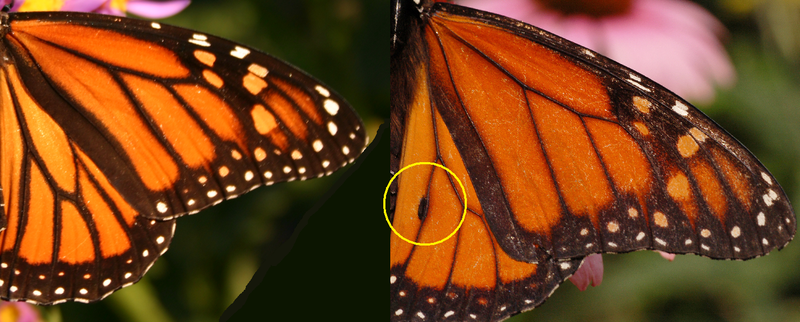
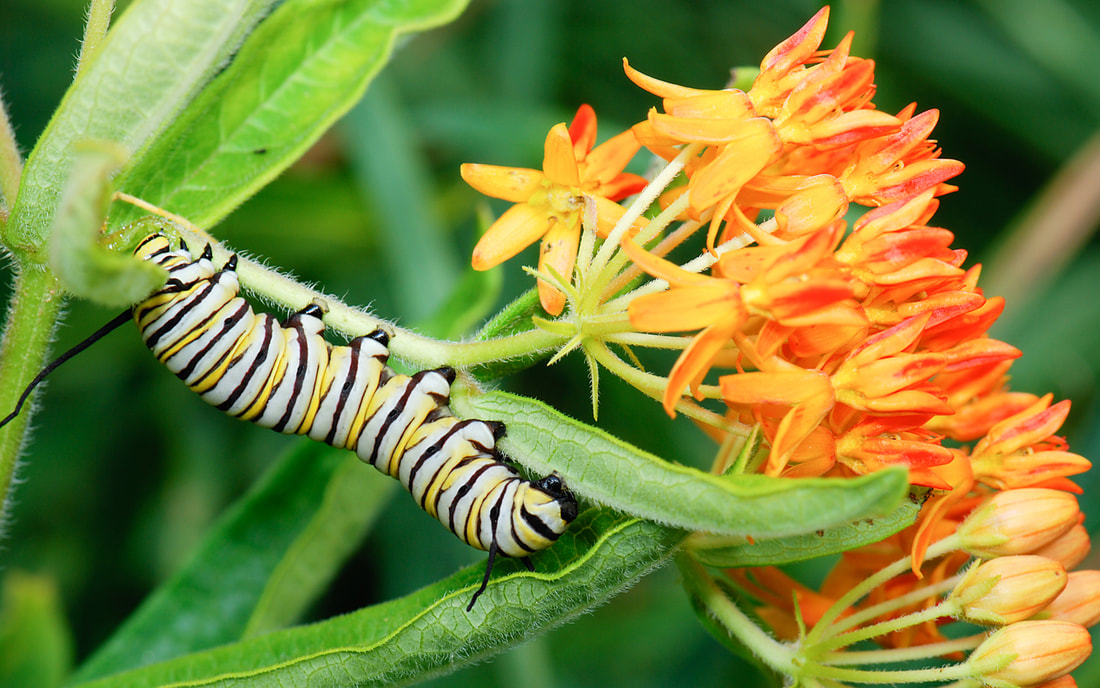
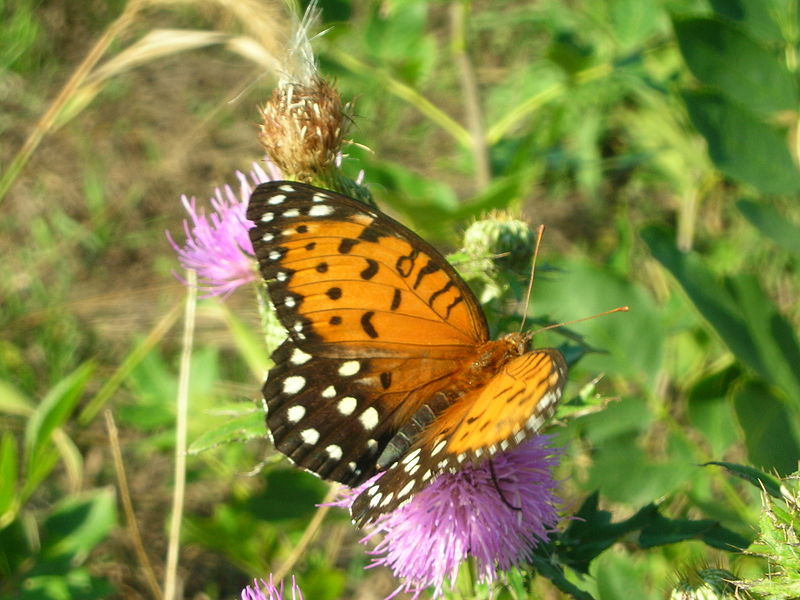
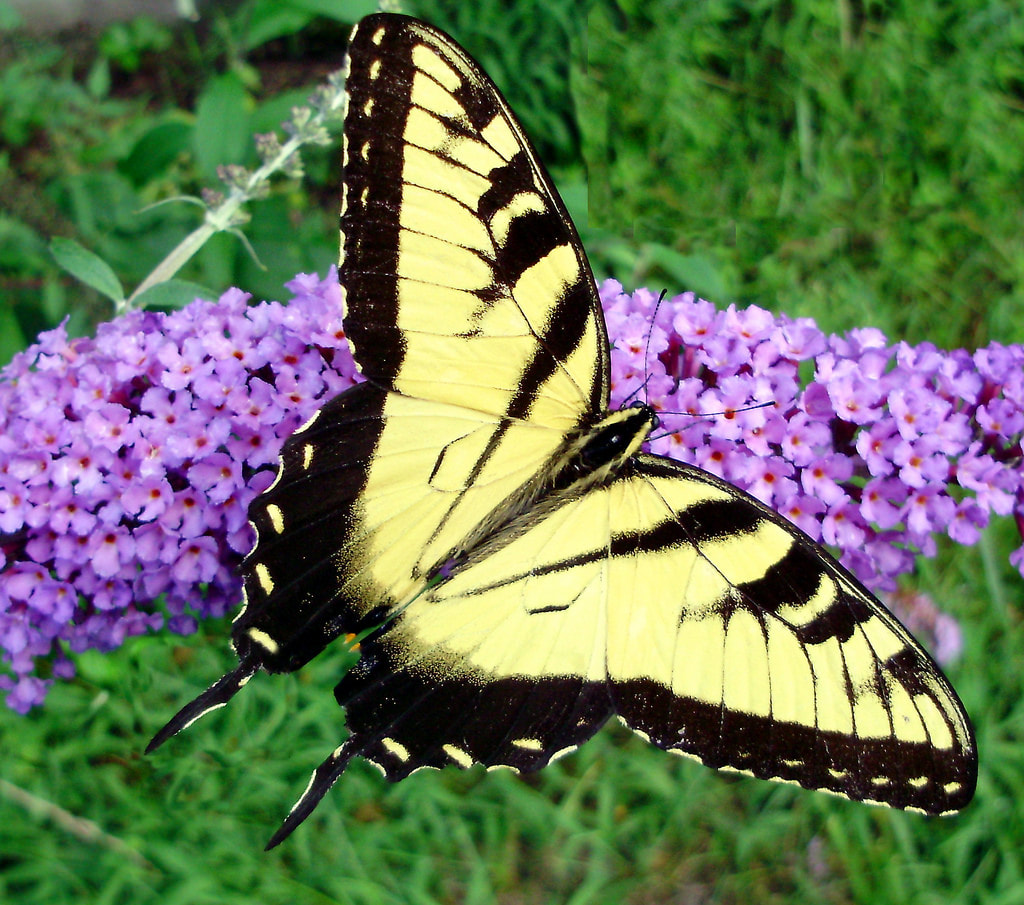
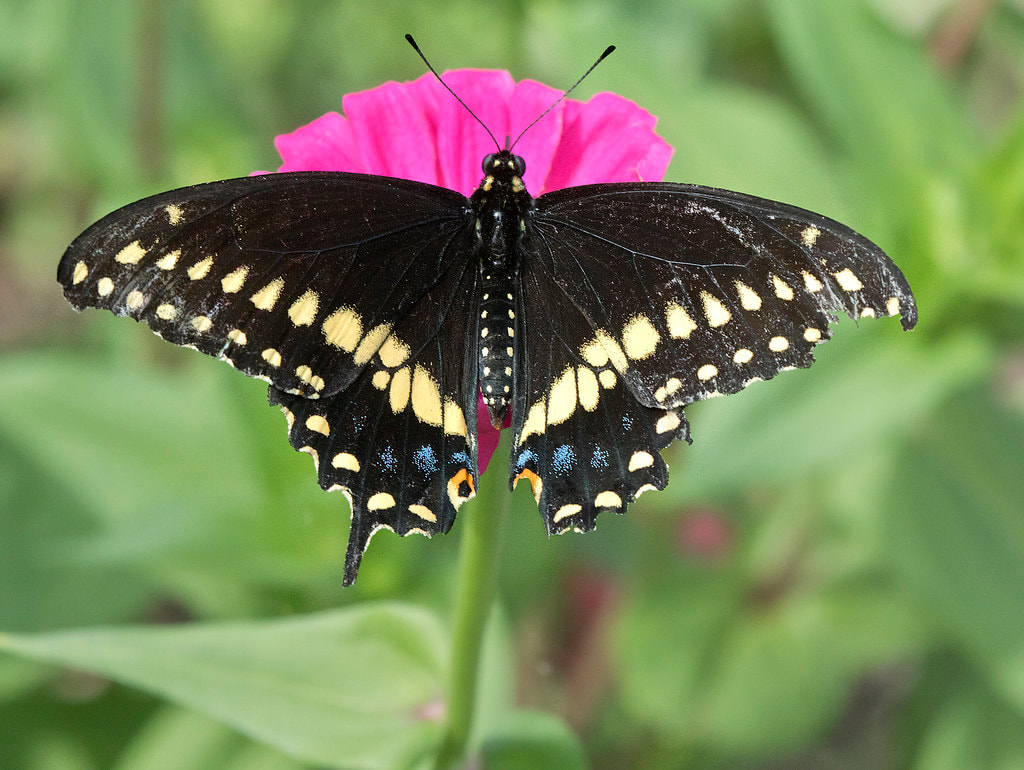
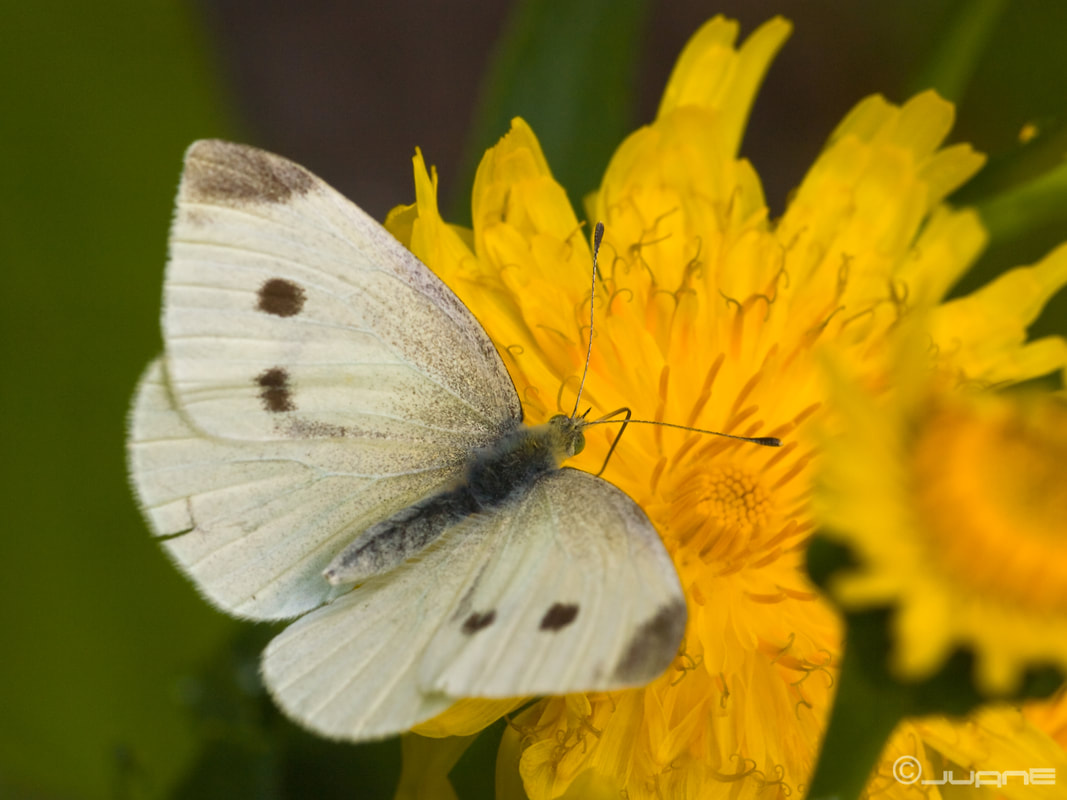
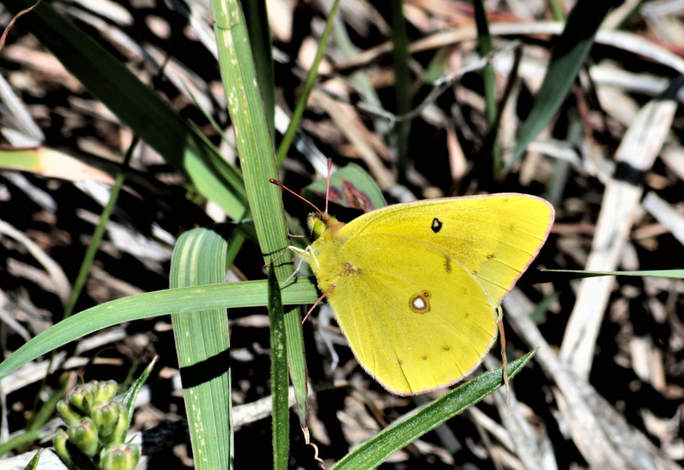
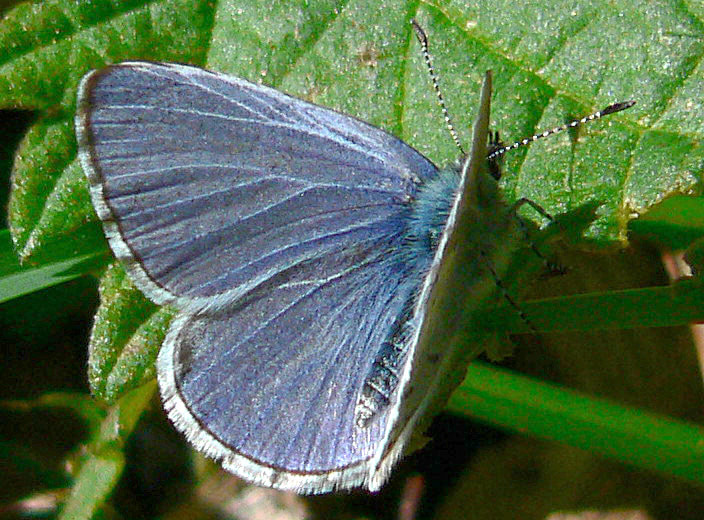
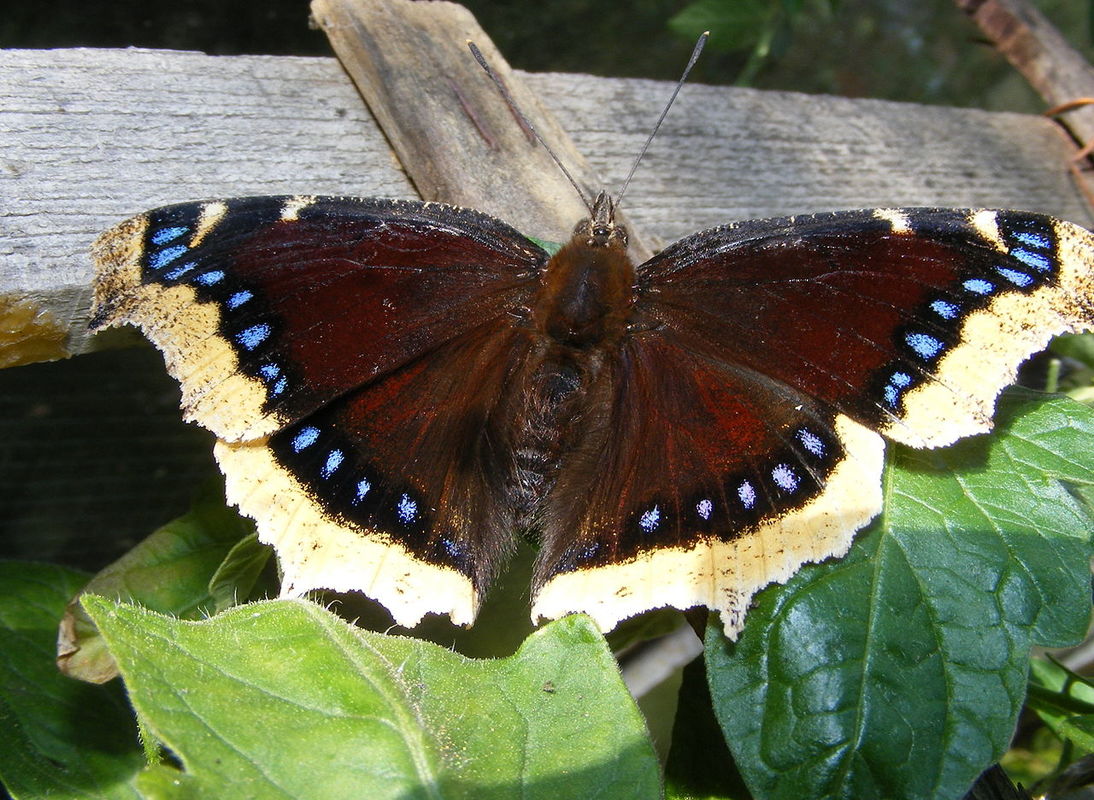
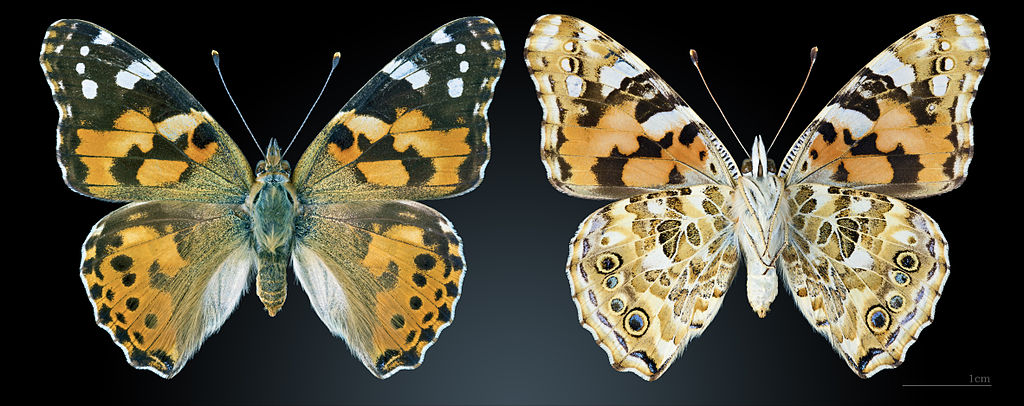
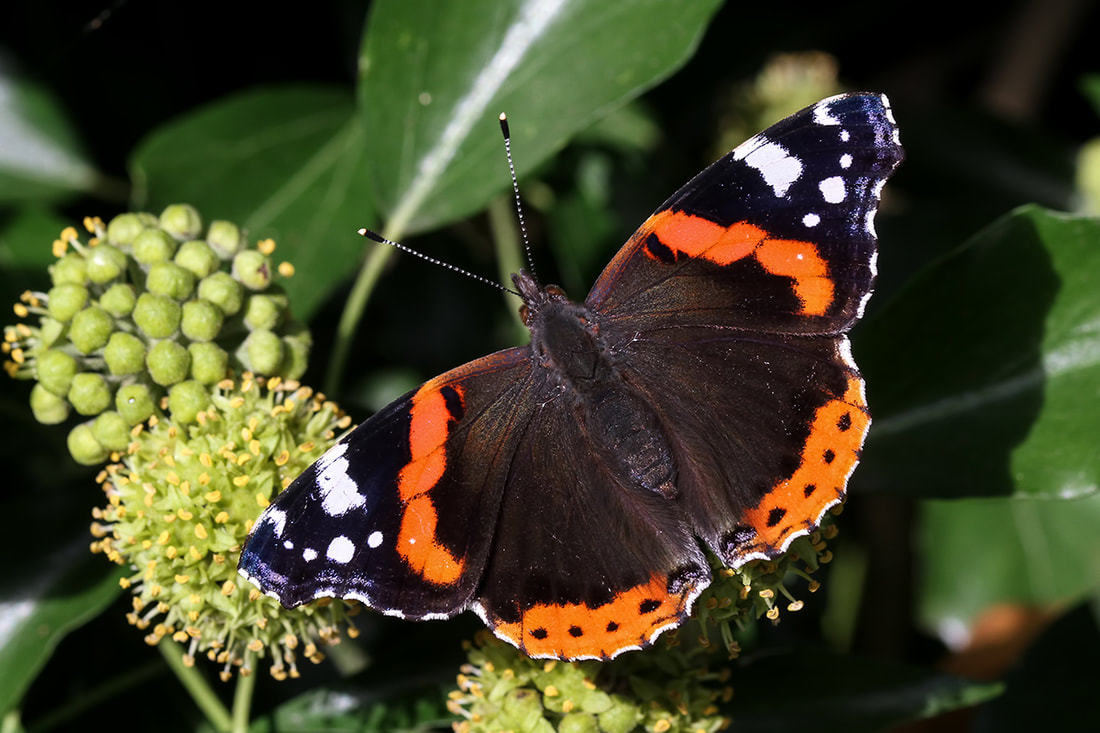

 RSS Feed
RSS Feed